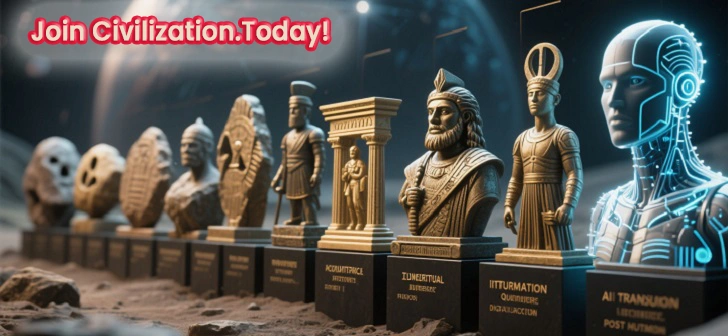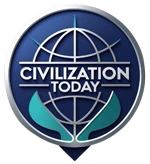From the dawn of human civilization, chaos and conflict were inevitable companions of progress. Tribes clashed, disputes arose, and without rules, survival often depended solely on strength and cunning. Yet, the turning point in human history came with the birth of laws—the moment when societies began to formalize rules, enforce justice, and create systems that shaped civilizations. This was not merely about punishment or control; it was about building the foundation of order, cooperation, and trust among people.
In this article, we will explore how laws were born, how they evolved across cultures, and why their creation became one of the most transformative milestones in human history.
Why The Birth of Laws Was a Turning Point
Imagine a world without rules: no contracts, no property rights, no justice system. Life would resemble perpetual anarchy. It was precisely this fear of disorder that compelled early civilizations to create laws. The birth of laws represented more than written codes; it symbolized humanity’s first attempt to balance freedom with responsibility.
Laws provided:
- Protection. Safeguarding people from violence, theft, and exploitation.
- Stability. Creating predictable systems that encouraged trade and cooperation.
- Justice. Ensuring disputes were settled fairly, not through blood feuds.
- Power Structure. Establishing authority and legitimizing rulers.
Thus, laws were not only rules but also the backbone of civilization itself.
The First Written Codes in Human History
One of the earliest examples of the birth of laws is the Code of Ur-Nammu (circa 2100 BCE), discovered in Mesopotamia. This code is older than the more famous Hammurabi’s Code and focused on fines rather than physical punishments. It was revolutionary because it showed society’s transition from revenge-based justice to institutionalized law.
Later came the Code of Hammurabi (circa 1754 BCE), inscribed on stone steles for all to see. Its famous principle, “an eye for an eye, a tooth for a tooth,” highlighted proportional justice. More importantly, it emphasized that law was above individuals, even rulers—laying the foundation for the idea of equality before the law.
In ancient Egypt, law was deeply tied to Ma’at, the concept of cosmic order and justice. Meanwhile, ancient China’s Zhou dynasty developed legalist traditions, where strict rules ensured obedience to authority. Across the world, civilizations independently understood that survival required rules.
Law and Religion: A Powerful Alliance
The birth of laws was often intertwined with religion. By connecting laws to divine authority, rulers ensured people respected them not just out of fear, but also out of belief.
- The Ten Commandments in the Hebrew Bible shaped moral and legal traditions in Western civilization.
- Hindu Dharmashastra guided not only religious practices but also civil and criminal behavior in India.
- Islamic Sharia Law blended spiritual guidance with legal principles, becoming a comprehensive system of order.
This fusion of faith and law strengthened the legitimacy of rules, making them unquestionable in the eyes of many.
Laws as Tools of Power and Control
While laws promoted justice, they also consolidated power. Kings, emperors, and governments used laws to legitimize their authority. For example:
- In Rome, The Twelve Tables (451 BCE) became the foundation of Roman law, protecting citizens’ rights but also reinforcing the Senate’s authority.
- In medieval Europe, feudal laws protected landowners while binding peasants to their lords.
- Colonial empires imposed their legal systems on conquered lands, reshaping societies to fit their political and economic interests.
Thus, the birth of laws was a double-edged sword—it provided stability but also became a means of control.
The Evolution Toward Modern Legal Systems
From ancient codes carved into stone to today’s complex constitutions, the journey of laws reflects the evolution of civilization itself. The principles of fairness, justice, and equality grew stronger with time:
- Magna Carta (1215) limited the powers of kings and inspired constitutional law.
- The U.S. Constitution (1787) introduced ideas of checks and balances, democracy, and rights of individuals.
- The United Nations (1945) promoted international laws aimed at peace, human rights, and global cooperation.
This shows how the birth of laws did not stop in ancient times—it continues to evolve with every new challenge society faces.
Why The Birth of Laws Still Matters Today
Even in the digital age, the concept of laws remains vital. From cybersecurity regulations to climate change policies, new rules are constantly being created to address emerging issues. Without them, society would once again descend into chaos.
Laws also reflect a society’s values. What was once acceptable (like slavery or child labor) is now outlawed because humanity’s sense of justice evolved. The birth of laws is, therefore, not a one-time event but a continuous process of redefining order.
Conclusion: Order from Chaos
The story of the birth of laws is the story of humanity’s struggle to create order from chaos. From ancient Mesopotamian codes to modern international treaties, laws have been the invisible threads weaving civilizations together. They protect, restrict, empower, and inspire.
Without laws, there would be no civilization. With them, humanity found the path to cooperation, justice, and progress. And as the future unfolds, new laws will continue to be born—shaping the destiny of civilizations yet to come.



